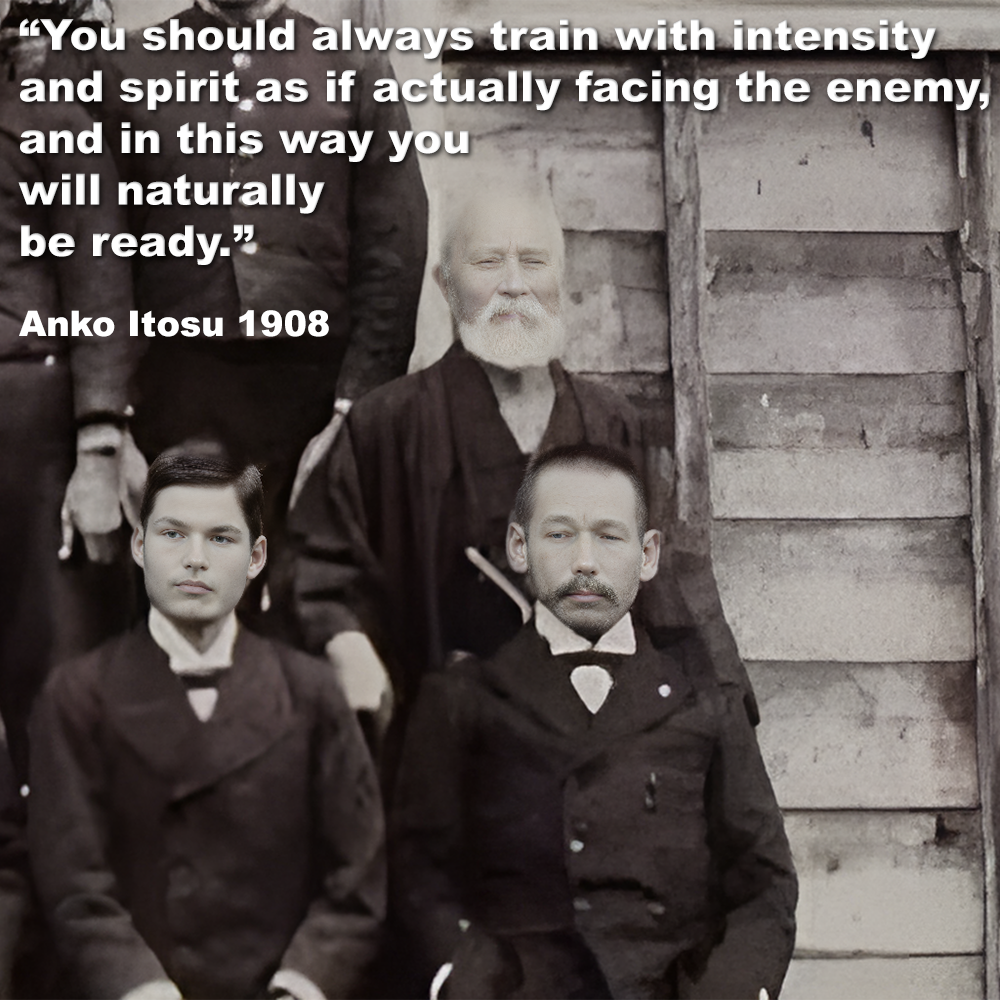
(2 minute 15 second read)
Anko Itosu, revered as the father (sometimes Grandfather) of modern karate, through his teachings, and writings, Itosu shaped the course of karate’s evolution.
.
Anko Itosu was born in 1831 in Shuri, the capital of the Ryukyu Kingdom, now Okinawa. Little is known about his childhood, but it is believed that he began his martial arts training under the tutelage of legendary masters, Sokon Matsumura, and Nagahama Chikudun.
.
Apart from his prowess in the art of ‘Te’, Itosu’s true brilliance lay in recognizing the need for change. As Okinawa transitioned under Japanese rule, ‘Te’, the Okinawan fighting method, the precursor to karate, once practiced in secrecy, faced extinction.
.
He saw the potential of ‘Te’ for physical and mental development. This innovation paved the way for the inclusion of ‘Te’ in the Okinawan school curriculum in the early 1900’s, marking a historic shift towards public accessibility.
.
Recognizing the need to adapt traditional martial arts for a changing world, Itosu introduced a set of standardized kata (The Pinan) and established a curriculum that emphasized both physical conditioning and moral development.
.
In October of 1908 Itosu realized it was time for karate to reach beyond the shores of Okinawa to the heart of Japan itself. He wrote his now famous letter of Ten Precepts (Tode Jukun) to draw the attention of the Ministry of Education.
.
This letter articulated the philosophical principles underlying the practice of ‘Te’ and underscored its potential as a tool for self-improvement and character cultivation, for developing young fighting men, for the imperialistic Japanese government of the period.
.
Through his tireless efforts as a teacher and advocate, Itosu helped ‘Te’ shed its image as a secretive and esoteric art practiced only by a select few, making it accessible to a broader audience.
.
The art of ‘Te’, known today as karate, which traces its lineage back to Itosu, embodies one of the esteemed legacies of Okinawan martial arts. His students comprise a virtual “who’s who” of the founding fathers of modern karate.
.
They include: Kentsu Yabu, Chomo Hanashiro, Jiro Shiroma, Chojo Oshiro, Shigeru Nakamura, Anbun Tokuda, Kenwa Mabuni, Gichin Funakoshi, Chosin Chibana, and Choki Motobu, who all went on to become prominent figures in their own right, spreading the art of karate throughout Japan and beyond.
.
Itosu’s teachings continue to inspire practitioners of karate around the world, serving as a guiding light for those who seek not only physical proficiency but also personal growth and self-discovery.
.
His emphasis on discipline, pragmatism, humility, and perseverance, resonates with the core values of the martial arts, transcending cultural and geographical boundaries to touch the hearts and minds of countless practitioners.
.
In the records of martial arts history, Anko Itosu stands as a towering figure whose contributions to karate are as enduring as they are profound.
.
Master Anko Itosu’s life serves as a powerful exemple of visionary leadership, adaptability, and unwavering dedication. Recognizing the evolving landscape of his era, he undertook the crucial task of meticulously adapting karate to ensure its survival and flourishing.
.
Through his foresight and meticulous efforts, karate transcended its regional roots to become a globally cherished art form, a testament to Itosu’s enduring legacy.
.
Anko Itosu passed away on 11th March 1915.
